
The music of Matmos is often tied to specific objects. The duo of Drew Daniel and M.C. Schmidt have built albums from the sounds of hospital operating rooms and the gurgling washing machine in their basement, and have collaborated with everyone from Terry Riley and Björk to an enthusiastic group of garden snails. Yet no matter what sounds these partners in life, love, and avant-garde head-fuckery choose to grind up, Matmos albums are defined by their deft musical technique, always amounting to more than the sum of their endlessly surprising parts. Yes, Daniel and Schmidt are masters of the sonic slice-up, but they always bring to their source material something personal. Artistic passions, histories, friendships, fears, and moments of incredible chance—listen close, and you can hear so much more in Matmos’s work than simply the things you can see or touch.
That unique ability to fuse the ephemeral and personal is strong on the duo’s latest release, Matmos Regards / Ukłony dla Bogusław Schaeffer, precisely because of the unique sources and sonic limitations at play. True to the album’s title, every sound that Daniel and Schmidt worked with was sourced from the recorded works of 20th century composer Bogusław Schaeffer, who passed away in 2019. Born in modern-day Lviv, Ukraine, Schaeffer made his name alongside other Kraków-based avant-garde composers including Krzysztof Penderecki, while bringing a playfulness to his experimental processes through early electronic works, surreal radio plays, and radical musical scores that look more like gorgeously abstract paintings than instructions to play music. With the express permission of the composer’s estate and Poland’s Ministry of Culture, Daniel and Schmidt began the overwhelming process of sifting through Schaeffer’s work, chopping and editing along the way.

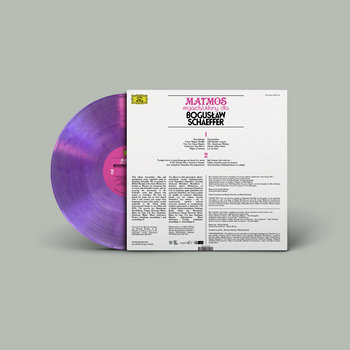
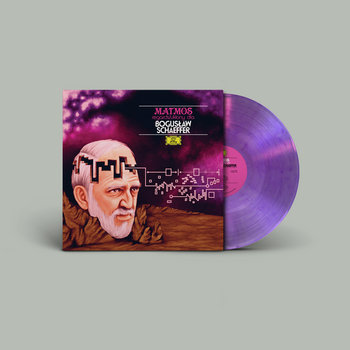


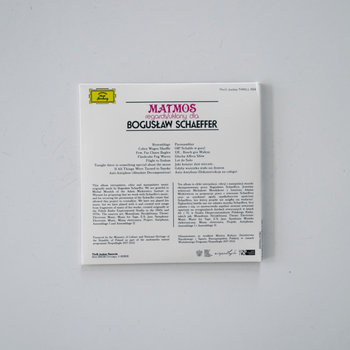
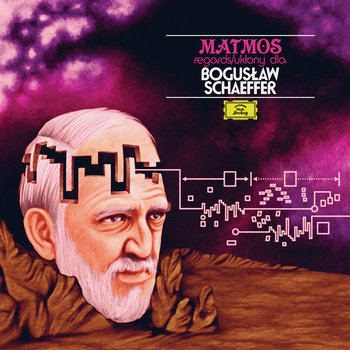

Vinyl LP, Compact Disc (CD)




“They always seem to have this aura of the historicity of that period and that gear, even when you slice it into little one-second or two-second fragments,” Daniel says of the Schaeffer’s unique timbres, which also became part of an Ableton sample pack. Schmidt, who digitally built the album in Logic, emphasized the need to take an on-the-fly approach so as not to become overwhelmed by such a large body of work. “We were making songs before I had heard three-quarters of it,” he says.
Though every sound comes from Schaeffer, the album is undeniably Matmos, and it captures the group at their most vibrant. Water splashes, honking brass, and organ stabs fuse together on highlight “Cobra Wages Shuffle / Off! Schable w gurę!” to form an exotica track in the spirit of Martin Denny—an idea Daniel says came from imagining what other records from the era might rub up against Schaeffer’s in a record bin. Meanwhile “Flight to Sodom / Lot do Salo” weaves digital blips and an angelic chorus into a nimble, airy techno track that ranks among Matmos’s most beautiful trips to the dancefloor. As both a mosaic of a specific musical era and a departure from their standard sample-gathering method, it recalls the duo’s 2008 love letter to vintage synth music, Supreme Balloon, a quality enhanced by Daniel and Schmidt’s intention to tour and perform the album in multi-channel diffusions, an ambitious and rare attempt to capture the magic of a ‘60s tape music concert.






Vinyl LP, Compact Disc (CD)




But as Regards / Ukłony dla Bogusław Schaeffer flows into its second half, that playfulness gives way to disorientation, darkness, and anxiety, calling to mind a different highlight in the Matmos discography, A Chance To Cut Is A Chance To Cure, which sourced its sounds from recordings of various medical procedures. Opening up someone’s creative legacy as Matmos did with Schaefer’s can certainly feel like surgery, except now Daniel and Schmidt aren’t just documenting the act—they’re the surgeons. And in the trajectory from silly and upbeat to frightened and reflective, Regards / Ukłony dla Bogusław Schaeffer celebrates its namesake, reckoning honestly with itself and allowing us to revel in the full spectrum of Matmos’s creative career. And perhaps the album’s encroaching darkness is the growing realization that a creator’s work may live on after them, but what happens with that work is left to others.
“There is an anxiety of the fact that someone isn’t alive to tell you ‘yes’ or ‘no,’” Daniel says. “We have the consent of the estate and legal permission, but if the angry ghost of Boguslaw Schaeffer comes to us in the night and stalks us, then maybe we’ll deserve it.”
In our guide below, you’ll find for primer of Matmos’s many brilliant experiments and just some of the many amazing stories behind them.
Matmos
Although you can find some earlier experiments on the 1993 limited cassette In Lo Fidelity, the duo’s self-titled debut captures both the magic of a new band and a new relationship. “Our relationship and the band are kind of the same thing,” Daniel says. For much of Matmos, the duo share and explore sounds they love, ranging from computer music to noise to jungle. Most of all, a shared love of musique concrète and avant-gardism shines through in playful experiments like “Three Guitar Lessons” or the bold sprawling 18-minute “…And Silver Light Popped In His Eyes.” Meanwhile, a sample of a crayfish’s nervous system on “Verber: Amplified Synapse” captured at San Francisco’s Discovery Museum, caught listeners’s attention and imagination, providing an idea the pair would soon explore more deeply…
Quasi-Objects
Matmos’s second album, Quasi-Objects, is built from single objects and sounds heard around the couple’s San Francisco apartment. Opener “Stupid Fambaloo” showcases one of the group’s first explorations of house music using only a balloon played by Schmidt. Daniel explains that the album reflects the idea of, “having fun with the task of having one hand tied behind your back. You can’t sample everything, and you have to see how much you can do with one thing.” Quasi-Objects also quietly captures the thrill of moving in with someone, and the way an ordinary space can take on a world of meaning.
The West
The twangy acoustics and warm atmosphere of The West may sound like a group of musicians playing together, but it features just as much careful editing as the albums preceding it. But that source material—which includes guitar recordings from frequent Matmos contributor Mark Lightcap as well as David Pajo—is stunning and utterly unique across their discography. “There’s samples of [things like] Mark tuning up,” Schmidt says. “It’s more about timbre, more about vibe. And if something’s not good, no harm done! We just don’t use those recordings.” The album is full of subtle touches—the pairing of a Pajo riff with the unmistakable sound of rustling bible pages, or title references to the drive between San Francisco and Los Angeles, the two main cities where recordings took place. The result is a Matmos album that sometimes gets overlooked, making it of their best-kept secrets.
A Chance To Cut Is A Chance To Cure
“You can tell when a project keeps sparking ideas and it just fires your obsessiveness,” Daniel says of A Chance To Cut Is A Chance To Cure, perhaps Matmos’s most iconic album and certainly its grisliest in terms of source material: namely, the sound of human bodies undergoing surgery. Though drawn from sounds of liposuction, nose jobs, hearing tests, and plastic surgery—an experience Daniel remembers being nervous might make him pass out while recording—the album is filled with some of Matmos’s bounciest dance tracks including “Spondee,” “California Rhinoplasty,” and “Lipstudio…And So On.” Tucked amongst these tracks is “For Felix (And All The Rats),” a tribute to Daniel and Schmidt’s late pet rat which they performed using his cage—which earned them a fan and future collaborator in Björk. “Felix was really into our music,” Schmidt fondly remembers. “No kidding, he would come to the cage, hands on the bars, and listen to us play.” Transcending even the rest of this brilliant album, it stands as one of the Matmos’s definitive works, an equally tender and otherworldly moment.
The Civil War
The Civil War originally grew out of the pair scoring an amazing deal on a grand piano, and Schmidt’s idea to use the instrument as the sole source of sound for an album. The piano never ended up on the album, but Schmidt’s notion of “taking simple things and scrubbing them until there’s nothing more to give” is expanded to include guitars, hurdy-gurdy, brass, strings, and more in songs that fuse electronic sounds with folk music from the American and English civil wars—while also grappling with the authoritarian hellscape of the Bush administration. That only seems like a lot on paper, because musically, The Civil War ends up being one of Matmos’s most effortlessly pleasurable releases. While it sometimes recalls The West on tracks like “Reconstruction” and “Through The Trees,” Schmidt and Daniel tap into their own vein of impossible sounds, including the shoegazing opener “Regicide” and “Yield To Total Elation.”
The Rose Has Teeth In The Mouth Of The Beast
Envisioned as a series of “sound portraits” dedicated to different queer figures in history, every track on The Rose Has Teeth In The Mouth of the Beast has enough ideas to fill a whole album. Daniel first conceived the record by writing down each of the self-explanatory titles, which hint at both biographical and musical elements, such as smashed dishes in “Banquet For King Ludwig II of Bavaria” or the natural percussion from “Roses and Teeth for Ludwig Wittgenstein,” whose quotes appear in little Easter eggs hidden across Matmos’s work. It’s an album that makes room for the swung house music of “Steam and Sequins For Larry Levan,” the space-age surf rock of “Solo Buttons For Joe Meek,” and a 14-minute ode to William S. Burroughs, ragtime, and the typewriter. The duo’s favorite moment is “Snails and Lasers For Patricia Highsmith,” which features the sound of snails moving through a light-sensitive theremin. “It could have been a recipe for nothing,” Daniel says. Instead, the snails became curious, using their eye stalks to manipulate the theremin’s laser. “I think that’s honestly one of the happiest moments in our lives, sitting in the dark watching snails fuck with a laser.”
Supreme Balloon
If The Rose Has Teeth took Matmos’s recording techniques to an ornate peak, follow-up Supreme Balloon grew out of a desire to put the microphones away entirely. In practice, that “no mics” rule sets the stage for this stunningly beautiful love letter to vintage synthesizers and early electronic music, featuring both legendary gear and legendary collaborators, among them Terry Riley. And while some of the old synths were a challenge to use, the album remains a dazzling experience. “That’s the advantage of being in Matmos,” Schmidt says. “You don’t have to know what you’re doing with any particular thing. We just harvest stuff and go back to the world we do know which is editing.” Supreme Balloon still stands apart in Matmos’s discography, but as the years pass, it feels like a classic in both its brilliant editing and foresight. The album also preceded the vintage synth craze of the 2010s; but more than being merely ahead of its time, Supreme Balloon finds Matmos pulling at a thread that’s run through all of their music both before and since.
The Marriage Of True Minds
Perhaps Matmos’s most conceptual album, The Marriage Of True Minds, was influenced by psychoanalysis and classic ganzfeld ESP experiments. Ideas for songs were mentally sent to test subjects, who then provided musical starting points, resulting in wildly different tracks. “In a weird way, it’s a bit like The Rose Has Teeth, where each song is so singular,” Schmidt says. Marriage Of True Minds also feels like Matmos’s most Baltimore record. The group’s first full album after moving to the city, countless Baltimore musicians appear as collaborators and test subjects including Dan Deacon, Jenn Wasner, all four members of Horse Lords, and an early standout by Ed Schrader on “Very Large Green Triangles,” the album’s best moment and one of Matmos’s greatest dance tracks. The album may not prove the existence of ESP, but seeing the potential of Schrader’s rapturous vocal performance so early in the singer’s brilliant career certainly suggests some kind of cosmic knowledge.
Ultimate Care II
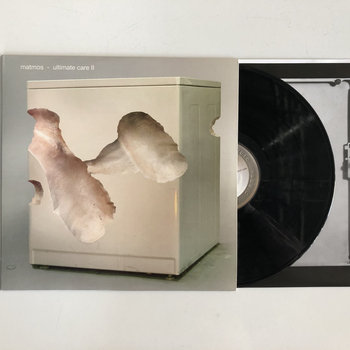
Vinyl LP

If Marriage of True Minds sits at one extreme in Matmos’s process, its follow-up rests comfortably at the other. A washing machine is the sole instrument on what, nonetheless, becomes a wildly vibrant canvas. From the opening crank of the dial and incoming glug of water, Schmidt and Daniel (alongside collaborators such as Dan Deacon and Horse Lords’s Max Eilbacher and Sam Haberman) coax increasingly alien moments from elephant-like trumpeting by rubbing metal to wild spectrums of electro-acoustic sound. “An object isn’t a concept. Some of our records are intensely conceptual, but some are just a commitment to an object,” Daniel says. Schmidt recalls how the washing machine—with its 40-minute cycle and distinct segments—had an album-like quality from the start. The resulting LP is one of the duo’s most exciting, and perhaps the perfect example of their ability to mine a seemingly infinite number of sounds and ideas from a single object.
Plastic Anniversary


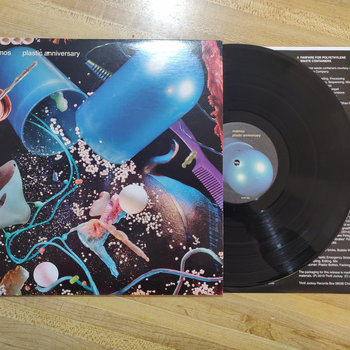
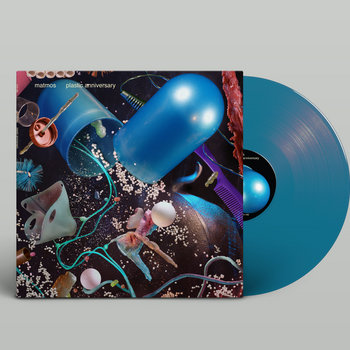
Compact Disc (CD), Vinyl Box Set, Vinyl LP




True to the name, Plastic Anniversary grew out of Daniel’s reflection on their 25th anniversary as a couple. “One of the key objects was the plastic fish I was wearing as a jockstrap the first night we’d really noticed each other,” Daniel says. “It was weird to reflect on [how] our treasured things are plastic, not some more valuable material. I went and found the plastic fish and it was decomposing. Seeing it breaking down, I thought plastic was maybe more interesting than we’d realized.” In addition to that jockstrap, they make use of PVC pipe horns, styrofoam bass tones, breast implants, and rubbed riot shields. Although the fluidity of plastic seems like a perfect material for Matmos conceptually, it proved to be difficult to work with musically. “It’s oil. Plastic is suspended oil,” Schmidt says, with a queasy look—though they wring out moments of real beauty, including the title track. Looking back, Daniel sees the challenge of working with the unwieldy material resulting in one of their most joyous sessions to date. “Plastic Anniversary was just like—this is so fun. I love being in this band.”
The Consuming Flame: Open Exercises In Group Form


Compact Disc (CD)


Matmos’s longest and busiest album, The Consuming Flame: Open Exercises In Group Form grew out of an improvised performance Daniel and Schmidt played with Jason Willett and Tom Boram in Baltimore. With no time to rehearse, they established 99 BPM as a solid template to prepare around. From that foundation, they eventually scaled everything up to include 97 players’s different 99 BPM contributions, which were blended across a trio of sprawling hour-long pieces. Though the album’s conception predated the pandemic, it still felt like the perfect lockdown project, in both the commitment to editing together all of its various pieces, or simply listening through it all in one go. Daniel describes Nurse With Wound as a key influence on the work, and just as Steve Stapleton’s famous NWW List acted as a doorway to a generation of experimental underground music, one can imagine people sifting through Consuming Flame’s seemingly endless chart of brilliant contributors with the same sense of wonder and curiosity.







